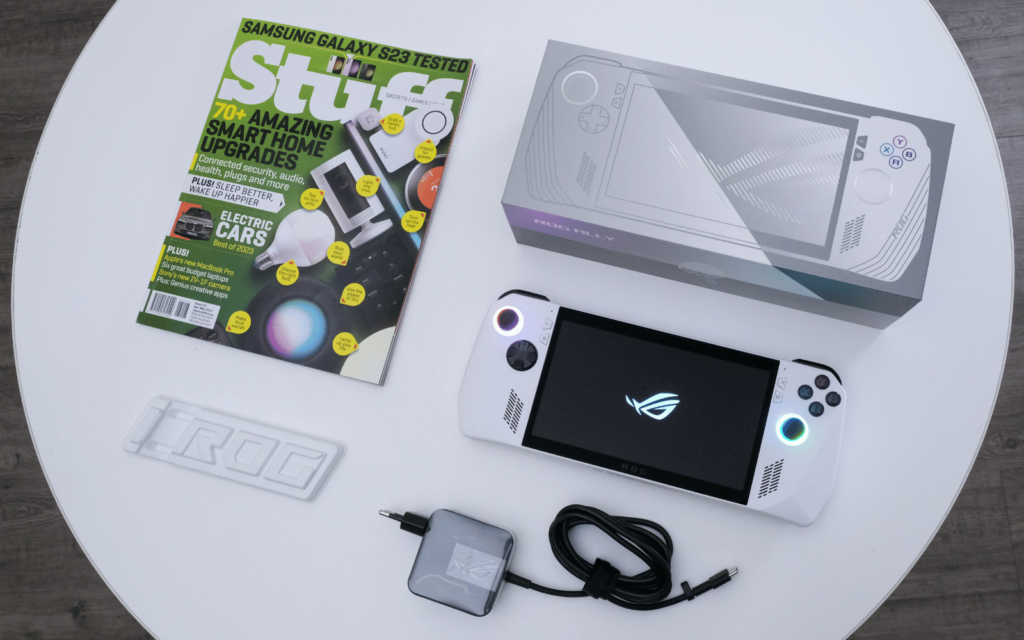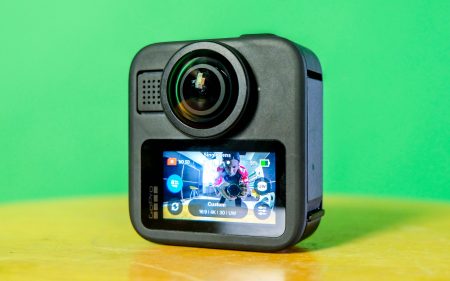Despite its many flaws and the puzzling decision to give media unfinished samples, we'd still recommend the ROG Ally to anyone in South Africa looking for a new handheld gaming device. You're getting a lot for your money compared to other locally available devices in this category.
-
Design
-
Display
-
Performance
-
Features
-
Value
In our local announcement coverage of the Asus ROG Ally, we mentioned pre-orders were available with local sales starting from 15 June. We also noted that we couldn’t tell you our full thoughts until then. That’s changed, thanks to a better-than-expected pre-order response. For a lot of gamers, it seems the R16,000 price tag isn’t high enough to warrant waiting for reviews.
We’ve already shared our first impressions of Asus’ new toy. Unfortunately, our excitement from our first hour or two with the ROG Ally tapered off pretty quickly. As much as we tried to keep our expectations in check, we couldn’t help but feel underwhelmed by its performance and battery management. We also found some rather annoying bugs in the handheld version of Armoury Crate.
Recently, at the local ROG Ally launch event, we discovered Asus has fixed many of the problems we initially faced. That’s great for everyone involved. Everyone except us. We’ll explain why later. First, here are some of the things Asus got right the first time.
There’s a lot to like
 The ROG Ally can be proud of several things. The immediately obvious first example is the size and weight. 608g might make it sound like a chonker but it felt lighter than we expected and is balanced rather well.
The ROG Ally can be proud of several things. The immediately obvious first example is the size and weight. 608g might make it sound like a chonker but it felt lighter than we expected and is balanced rather well.
We were next impressed with the 7in 1080p touchscreen. It’s not one of Asus’ OLED panels but the 16:9 IPS LCD display still performed admirably. Brightness was never an issue, including playing outside in the glaring sun, and with support for 120Hz, HDR, Dolby Vision, and AMD Freesync Premium, games and video content look good.
Just because 1080p 120Hz is supported, doesn’t mean you can expect every game to get there. Powering the ROG Ally is a ‘custom’ AMD Z1 Extreme chipset. But calling it ‘custom’ is generous considering it is almost identical to AMD’s Ryzen 7 7840U chip made for laptops. ‘Slightly tweaked’ is closer to the truth but that’s not as flashy.
The Z1 Extreme chipset is paired with 16GB of LPDDR5 RAM. It’s soldered into place and shared between the system and the GPU. For storage, there’s a 512GB PCIe Gen 4.0 M.2 SSD.
With the size of games today, you may find 512GB isn’t enough for you. The microSD card slot along the top is the easiest way to expand the storage or you can swap out the SSD for something roomier (and faster) if you’re a digital hoarder.
Asus keeping its cool
We also want to give a special mention to the Asus engineers that designed the ROG Ally’s cooling system. Even when they’re pushed in the highest power profile, the dual fans were surprisingly quiet and do an excellent job of dealing with the heat from the AMD chip.
We noticed the CPU temperature climb to 95°C in some cases during our tests. Thankfully the Ally’s cooling system directs that heat away from your hands so you’d be none the wiser with the real-time system monitor turned off. We still wouldn’t recommend getting your eyebrows too close to the top vents.
Another praiseworthy feature is how quickly the ROG Ally charges. The 40Wh battery will vary with how long it lasts depending on how quickly you chug its juice. When it inevitably dies, using the included 65W charger resulted in roughly 25 minutes to 50%, 40 to 45 minutes until you’re at 80% with another 40 or so minutes to charge up to full.
We’ll save you from having to search and tell you the USB Type-C 3.2 Gen2 charging port lives inside the XG Mobile connection along the top. It also supports a Display Port 1.4 output so it’s possible to hook up a dock and play on a TV. That’ll cost you extra. Same deal if you want a case or an external GPU.
For all the grief it causes, Windows running natively on the ROG Ally means your gaming options include almost any platform or launcher you can think of. You’ll have access to your Steam, Epic, GOG, Xbox Game Pass, EA, and Ubisoft game libraries through Armoury Crate and because it’s so widely supported, Windows makes running emulators possible. Game streaming is also possible on the Ally, you’ll just have to wait until the companies that offer it add South Africa to their list of supported countries.
It’s not all peaches and cream
 Asus made a note of pointing out that the device it sent us was an early marketing sample and didn’t necessarily reflect the final product – which is never ideal and makes our job of recommending (or not) the Ally difficult.
Asus made a note of pointing out that the device it sent us was an early marketing sample and didn’t necessarily reflect the final product – which is never ideal and makes our job of recommending (or not) the Ally difficult.
Case in point, one of the triggers on our unit was wobbly and had a nasty habit of catching on the body when depressed which we were never able to get used to. But we know for a fact this problem isn’t present in all of the early models. Will it be present in the one you buy? Probably not, but it’s not impossible.
Another more painful example of this was with performance and battery life. The experience wasn’t terrible, but there was something missing. That ‘something’ turned out to be better firmware and drivers.
 From the time Asus collected our unit to when we were next able to get our hands on it at the event, the device received a couple of significant updates. We weren’t able to do any proper benchmarks at the event or replay the titles we tested when we had the Ally, but the performance improvements could be felt in the higher power profiles.
From the time Asus collected our unit to when we were next able to get our hands on it at the event, the device received a couple of significant updates. We weren’t able to do any proper benchmarks at the event or replay the titles we tested when we had the Ally, but the performance improvements could be felt in the higher power profiles.
Armoury Crate SE and the Command Centre had also improved. Gone were the stutters that occurred when switching power profiles or controller modes. The Command Centre overlay now displays the wattage for the power profiles, system volume has its own slider, and we found a new feature that lets you adjust the amount of memory dedicated to the GPU.
Asus ROG Ally verdict
No company delivers a perfect product on the first try and while Asus has a long history of making gaming peripherals, portable gaming laptops, or gaming-focused smartphones, the ROG Ally is the first of its devices to offer a versatile gaming experience in a lightweight, compact form factor.
But being the first generation can also work against the Ally. If Asus takes it down the same route as its laptops and tablets, the ROG Ally 2 is already being worked on for a release in a year or two. If that’s the case – we haven’t seen any indication from Asus that it is – it makes this ROG Ally difficult to recommend if you’re not desperate for a new handheld gaming device right now.
Yet, with that in mind, we would still recommend the ROG Ally. If you’re in the market for a handheld gaming device we would’ve even recommended it before the updates made it better. There are no two ways around the fact that it is the most capable device of its kind available in SA.







